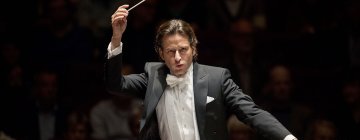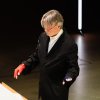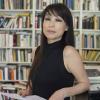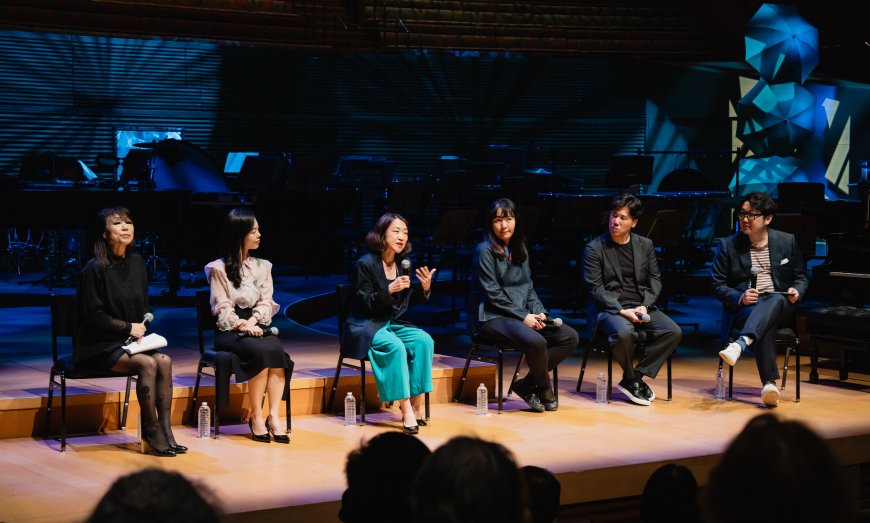
The idea of showcasing Korean arts and culture in Los Angeles is hardly a far-flung or exotic concept. The city’s thriving Koreatown area, just a few miles from downtown and Walt Disney Concert Hall, boasts the largest enclave of ethnic Koreans abroad.
So the Los Angeles Philharmonic’s Seoul Festival is a celebration of both a globally engaged culture and a close neighbor. In four concert programs curated by composer Unsuk Chin, the LA Phil is stepping up in its characteristic way, commissioning several world premieres that demonstrate the vibrancy of contemporary Korean classical music.
Before this weekend’s slate of symphonic performances, Chin and a handful of younger composers enlivened the LA Phil’s longstanding Green Umbrella series on Tuesday night, June 3. The program, dubbed “New Voices From Korea,” was enthralling and varied, illustrating the poetic muscle and thoughtful hybrid work of a rising generation.
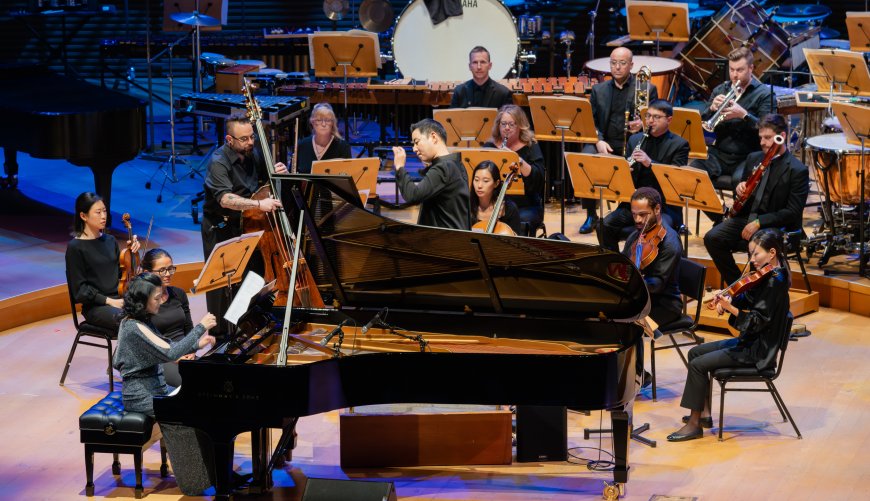
Generally, these young composers are exploring ways to fuse Eastern and Western musical traditions, shifting between tonal and dissonant tactics and with periodic detours into jazz, minimalism, and Korean folk and court music. Sharply detailed percussion parts could be heard in many of these new and recent pieces, and the indigenous Korean daegeum (bamboo flute) got the spotlight in one standout work.
Conductor Soo-Yeoul Choi boldly led the combined forces of the LA Phil New Music Group and Ensemble TIMF, a respected collective of young Korean players.
The opening selection, Juri Seo’s Concertino for Piano and Chamber Orchestra, saw soloist HieYon Choi fling into action from the outset. Her fervent washes of sound at the keyboard were energized by a percussion-charged background. The floating, impressionistic sensation of the piece’s second movement, “Schumann,” segues into a “Jazz Fughetta,” and the score ends with intensity and propulsion.
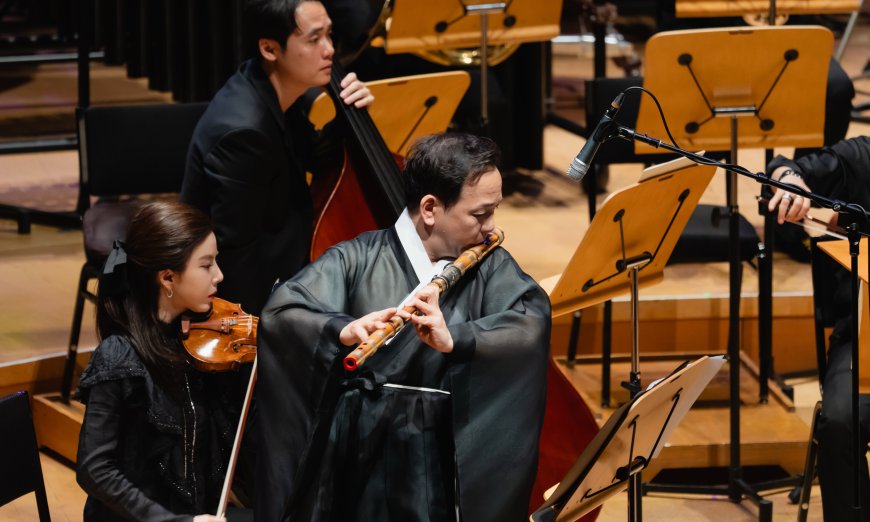
Sun-Young Pahg’s L’autre moitié de silence (The other half of silence), featuring Hong Yoo on daegeum, was a high point of the program. The music, largely atonal and post-serial, is a fortuitous meeting of East and West. Crisp ensemble gestures and key silences were etched in a respectful and particularly powerful way in the superb setting of Disney Hall. The performance seemed to echo the effect of Pierre Boulez’s Rituel in memoriam Bruno Maderna, heard in the same space only a few weeks earlier courtesy of Esa-Pekka Salonen and the LA Phil.
By contrast, Yie-Eun Chun’s Violin Concerto — here in its world premiere, with SooBeen Lee as the assured soloist — was a lyrical invention in a minimalist vein. The opening movement, Poco a poco, focuses on narrow harmonic parameters, though with sly ornamentations and prismatic deviations around the home key. The simple scalar Passacaglia sounds a bit too much like Philip Glass for my taste, but faster pyrotechnics and feverish fiddling soon bring on a bracing finale.
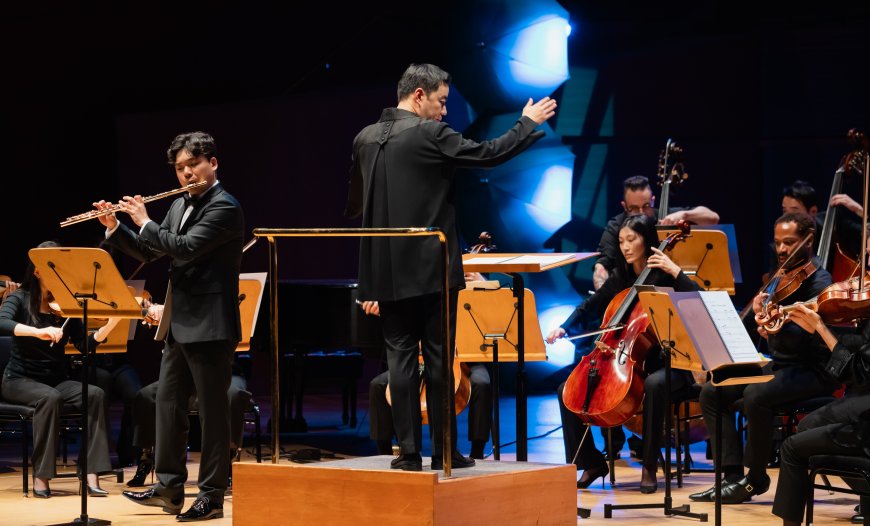
The title of Dongjin Bae’s new piece, reflective — silky and rough (also receiving its world premiere on Tuesday), informs us up front what to expect. The three adjectives refer to the mercurial flute part (expertly played by Yubeen Kim), as well as to the narrative flow of the piece itself. Gracefully nuanced waves of dynamic sound and energy pass through the score, with fleeting dissonances in tow.
The evening came to a striking climax with Chin’s episodic 20-minute Gougalōn (Scenes From a Street Theater), heard in its West Coast premiere. It was perhaps inevitable that this composer, born in Seoul and based in Berlin — now 63 and one of the most acclaimed figures on the international contemporary scene — should make the strongest impact.
Chin freely evokes the sounds of her childhood — the roving bands of musicians, actors, and medicine men who traveled from village to village — in order to create a new kind of “imaginary folk music,” as she describes it. The result is a visceral, textured, kaleidoscopic set of six short movements with such titles as “Lament of the Bald Singer,” “Circulus Vitiosus — Dance Around the Shacks,” and “The Hunt for the Quack’s Plait.”
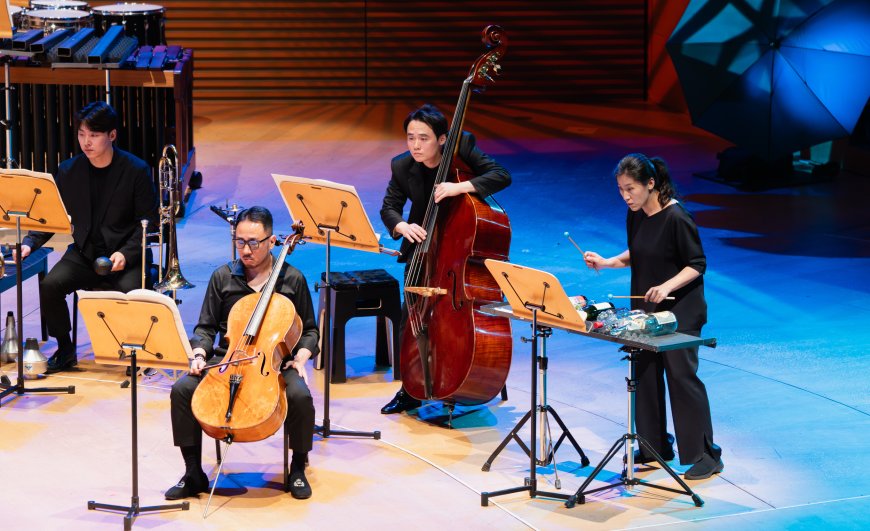
Each movement has its own character, from the enigmatic haze of “Bald Singer” to the pulsing percussion and erratic rhythmic chatter of “The Grinning Fortune Teller With the False Teeth.” There are undulating strings and wending winds in “Circulus Vitiosus,” and the whole piece concludes with the surging and smashing dynamics of “The Hunt,” simultaneously cerebral and heart-racing.
Chin’s music proved the perfect grand finale to a fascinating journey across the world and just down the block.
